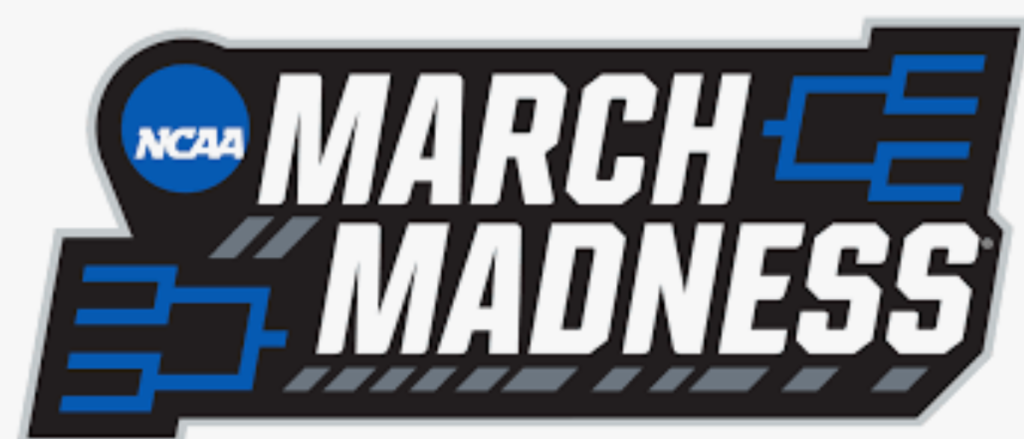
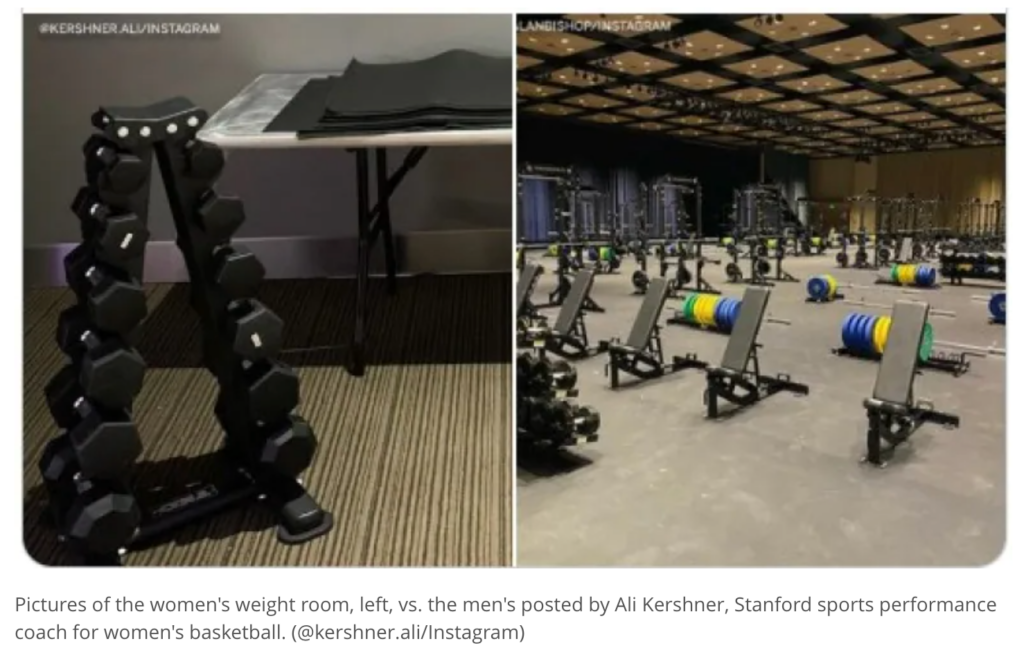
As March Madness starts to gear up this year, I thought it would be a great time to reflect on March Madness 2021. A lot of people spoke out on the topics surrounding March madness. This makes sense as it is one of the largest aired NCAA tournaments. Well, it is for the men’s teams at least. On March 18, 2021, Sedona Prince, a starting forward for the University of Oregon, posted a video comparing the weight rooms that the NCAA provided for the men’s and women’s basketball teams within the March Madness bubbles (Indianapolis, IN for the men’s and San Antonio, TX for the women’s) (@sedonaprince_, 2021; Yücel, 2021). In her video Prince was showing that the women’s teams had access to some yoga mats and one set of dumbbells. On the other side, in Indianapolis, we see a fully stocked weight-room, multiple machines, free weights, bikes, and treadmills all of which are socially distanced with several full work out areas. The video leaves no question that neither the women’s accommodations nor the equipment was remotely equal to the men’s facilities and accommodations. The video went viral and spawned empathy from both male and female professional athletes, politicians, businesses leaders, as well as from the general public (Yücel, 2021). Sedona Prince was not the only athlete to speak out. Numerous other athletes and coaches (past and present) turned to social media showing the inequalities in the food the teams were receiving, as well as their swag bag and worst of all the COVID tests being used in San Antonio compared to those used for the men’s tournament in Indianapolis. All of these inequalities caused a social media uproar.
It was very clear that the NCAA leadership did not have empathy towards the female athletes. The responses from the NCAA were dismissive and filled with excuses rather than taking responsibility for their actions and planning. The first responses to come out were along the lines of, they had planned to expand the weight room as more teams went home, and that the food is being provided through the hotels, and of course that there is not enough space. Which as seen in Prince’s video there was more than enough space surrounding the practice courts.
Immediately following the release of the video, female athletes and coaches posted, tweeted, and mailed letters providing greater insights into the historical gaping disparity between Division I men’s and women’s NCAA tournaments facilities, accommodations, and support. Even women’s basketball legends turned to twitter to air their frustrations. Muffet McGraw had a lot to say on the topic, she recalled how this is not a new occurrence. She could only outfit her team with uniforms and warm-ups using discarded items from the men’s program (@MuffetMcGraw, 2021). Muffet McGraw goes on in her tweet to talk about several of the other inequalities that are right in front of everyone’s faces. For example, have you ever thought about how for men’s sports there is just the name of the sport but for women’s it has to say women’s first? The same is true with the NCAA twitter accounts for March Madness it is only for the men’s tournament (@MuffetMcGraw, 2021). She put it very plainly it is not the poor-quality weight room that is the problem it isn’t even that the food is worse, it is that “no one on the NCAA’s leadership team even noticed” (@MuffetMcGraw, 2021). Many current coaches, such as Geno Auriemma from UCONN, Dawn Staley from South Carolina, and Tara Van Derveer from Stanford spoke out as well just to name a few.
The NCAA, a non-profit organization, is responsible for interpreting and supporting member legislation, running all championships and managing programs that benefit the student-athletes. Over a half a million NCAA Division I athletes compete in 27 different sports each year and 80 tournaments. The NCAA webpage states, “The NCAA believes in and is committed to diversity, inclusion and gender equality among its student-athletes, coaches and administrators.” Yet, the evidence from the 2021 March Madness tournament that the NCAA is not about equity nor focused on what is best for all student-athletes, but rather they cater to and focus on the men’s sports.
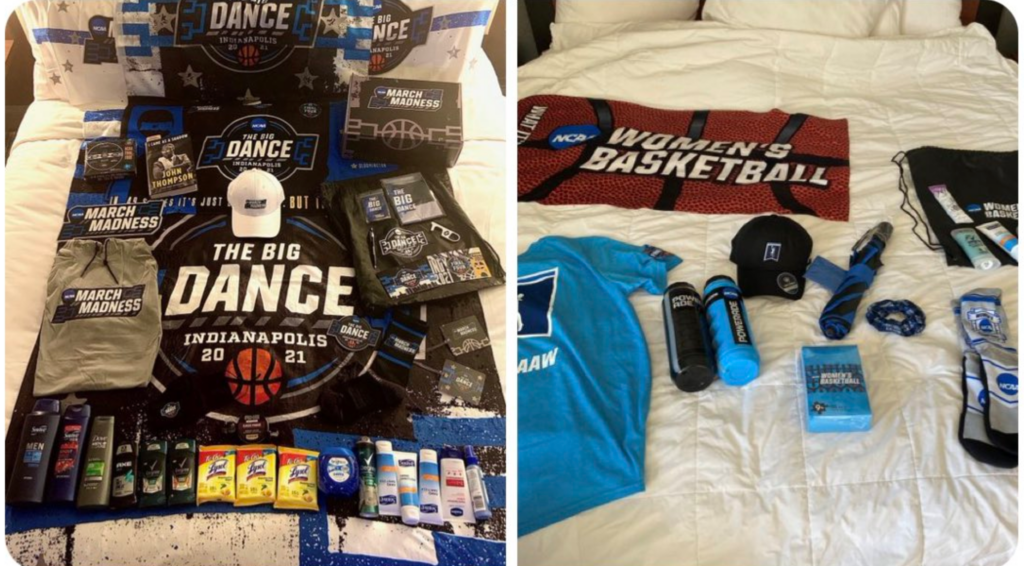
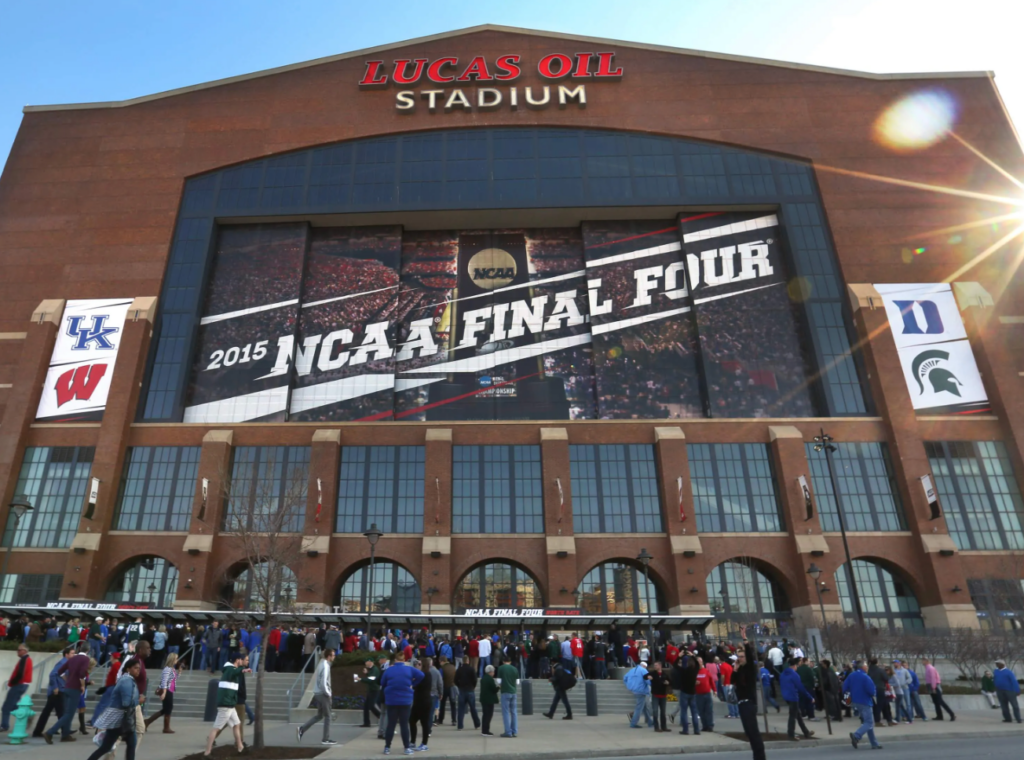
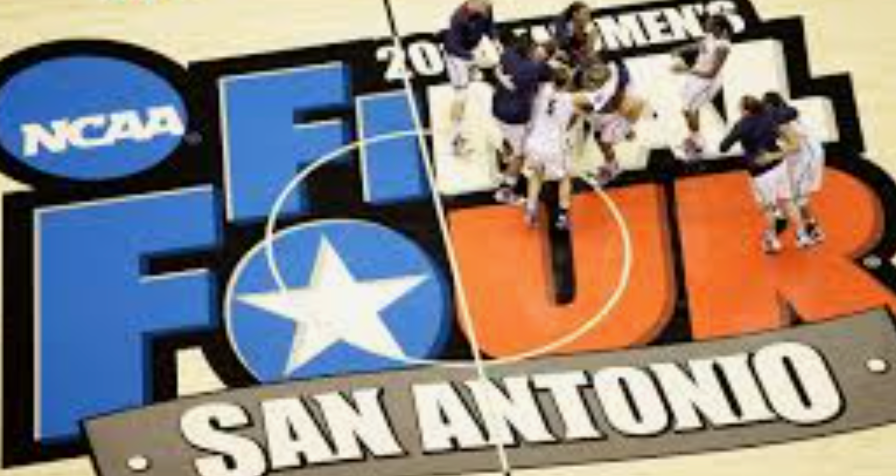
One very popular comment from individuals who do not support gender equality in sports, is that the men’s NCAA basketball tournament earns more revenue than the women’s tournament because of attendance. This in and of itself shows that people who are being negative about this on social media have a lack of empathy. They are unable to understand the social and historical context of these issues. The statistics are as follows: an average of 4600 people per game attend the men’s games and the tournament brings in $933 million, while women’s NCAA basketball brings in $266,000 with an average of 1600 attendees per game (Jope, 2021). The disparity in sales is not due to the interest of the sports it is normally due to the venue that has been allotted for each. Notice the disproportionateness of this data: 1600 versus 4600 (men’s has about 3 times more attendees), $933 million versus $266,000. Simply put, the revenue is not because of people attending the games! Some may claim that the difference is due to the price of tickets, but these are fairly equally priced with the women’s average being slightly higher at $200 and the men’s at $195. So, yes, the Men’s NCAA basketball brings in more revenue. It all boils down to the idea that you get out what you put in. Looking deeper into this idea of revenue, the men’s tournament makes $770 million from the NCAA’s contract with CBS Sports and Turner Broadcasting. The largest percent of the revenue therefore comes from broadcasting the games. It should be the responsibility of the NCAA and all universities to require equal broadcast time and live streaming for both men’s and women’s sports. Many people choose to watch men’s sports because that is the only option.
Furthermore, NCAA is a non-profit organization whose responsibility is for the management of all programs that benefit the student-athlete. The revenue from the men’s NCAA basketball tournament represents more than 90% of all revenues from all sports within the NCAA. I can hear the naysayers snickering and thinking this bit of data just proves their point, but in fact it simply highlights the fact that the NCAA is responsible for all college athletics and this revenue supports scholarships, travel, fields, referees/umpires, and all other expenses associated with every college sport both male and female. Every collegiate student-athlete deserves to receive the same opportunities, facilities, and accommodations because each student is there to earn an education while representing their college within their selected sport.
The opening days of the 2021 March Madness brought light upon the gender inequalities of the NCAA and has fostered and bolstered empathy for female athletes from both male and female professional athletes, politicians, business leaders and the general public. People are now becoming aware of some of the inequalities female athletes face at the collegiate level. Many professional female athletes are speaking out about their inequalities as well, mostly in the terms of pay. This is showing a little of what is behind the veil. Meaning that most people don’t dare look into women’s sports because they are “fine” going about their business in the shadows. Allowing people to look behind the veil is allowing others to have that historic and social context to feel empathy. However, empathy alone does not create systemic change. Kudos for the business leaders who quickly pulled together a more equitable weight room for the women’s teams, but that is a blip within the chasm of the inequalities. It is time for the leadership of the NCAA and the Federal government to stand behind their statements of equality or stop claiming to do so.

But all of this leads to the biggest question of all. Why didn’t the leaders notice? Several members on the leadership committee were collegiate athletes themselves. They went through these exact same things. In an interview Lynn Holzman, NCAA vice president of Women’s basketball, made it seem as though they have pushed the bound far enough. Saying that “this [2021] is one of the first years that a majority of the tournament is being broadcasted on national stations rather than local stations” (Yücel, 2021). Like what, what year are we in? How long has men’s collegiate sports been aired on national stations. This is a small step but not enough, and nothing should ever be enough to stop pushing. There is no reason to ever settle. So why didn’t they do more? Some say it is a feeling of a lost cause. They have pushed the bound so that should be enough. Others say it is more along the lines of I went through it so you should too, which is archaic and then they should not be in a place of power. But whatever the reason, whatever the obstacles, there was no sense of empathy where there should have been a sense of sympathy (having gone through the same things). Muffet McGraw put it best, “We have accepted our fate for far too long. We have taken crumbs from the table we don’t even have a seat at, and we didn’t complain. . . Well times up gentlemen. This generation of women expects more, and we won’t stop until we get it” (@MuffetMcGraw, 2021).
Check back later in March to read about what all has changed in the last 2 years and remember when pushing for equity do not give up because you got a little. Do not accept the crumbs any longer stand up and take what is rightfully yours.
